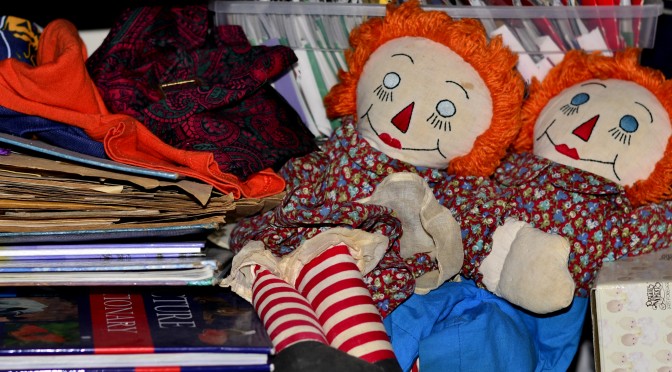ENGL 3090 builds on the competencies developed in English 1101 and 1102, with a special emphasis on composition intended to explain, inform, and describe. As with any kind of writing, expository writing is rhetorical; it has a purpose, audience, author(s), and context. Consequently, this course will continue to develop your ability to identify, analyze, and respond to rhetorical situations.
Regarding the purpose of the writing we’ll be doing this semester, the other primary subject matter of this course will be the material world of objects through which we move in our day to day lives. We will consider why we are driven to create, use, consume, and accumulate things. Why and how do we form emotional attachments to inanimate objects? What do the possessions we own say about us–about our social and economic status, our cultural and ethnic identities, our psychological profile? To what extent is human behavior and expression dependent upon tools, prostheses, and other material goods? Does being human require a world of objects against which or through which we can define ourselves? These are the sorts of questions the field of material culture studies has evolved to answer, and these are the questions we will take up and examine in our reading and writing.
Finally, we will consider the place of expository writing as part of a larger multimodal project of exposition. In addition to writing, we use a variety of other modes—oral, visual, electronic, nonverbal– to interact with and communicate about the material world. Developing your ability to integrate your writing with these other modalities will improve your rhetorical expertise.
Summary of projects: The course includes the following projects, which are designed to engage you in the processes and rhetorical analyses involved in expository composition: a class blog, a series of very brief Twitter “essays,” a photo study of an object, a collaborative timeline detailing the “evolution” of the objects the class has chosen to study, a 3-D model of an object, a multimodal object analysis, and a final portfolio. Unless otherwise noted, all documents and artifacts will be submitted on Marca, except for the course blog, which is here on our course website.
The blog, Twitter essays, photo study, timeline, and 3-D model will all build towards and contribute to the multimodal object analysis and your final portfolio. Failure to complete projects early on will make completing later projects that reuse or remix work from previous projects more difficult. It’s especially important, therefore, to keep up with the work in this course.
Reading: As a class, we will all read some materials in common (chapters from the textbooks as well as articles), but some of your reading will be selected, using criteria I provide, based on the specific subject matter you choose to address in your compositions.
Reflection: Many studies about the relationship between learning and reflection indicate that long-term learning takes place during reflection about the work rather than simply in doing the work itself. Thus, following each of your projects, you’ll submit a reflection that will require you to analyze and explain your learning and composition process.
Many thanks to R.E. Burnett (LMC3403) and Cydney Alexis (WRIT 1133), whose syllabi and course design have been reused and remixed in the syllabus and design of this course.
Image credit “Cuckoo clocks / Kuckucksuhren” by Hellebardius on Flickr: https://www.flickr.com/photos/libaer2002/2976349320.







